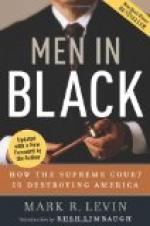The course of justice has been on a rough and rather narrow road. The popular revolt at the method of arriving at the truth is, in fact, at the narrowness of the way. The presentation of a case and the means of reaching the truth ought to be on a well-defined and orderly system. It would seem natural that the crooked and ill-paved streets of an old town should give place to the open, smooth, and broad avenues of the modern spirit.
XIII
ELOCUTION
At last when both sides rest and the judge has passed on the latest motions, the intense action of the drama begins. For this the clients have been waiting, the lawyers have been training. It is the opportunity for them to display their attainments, to show their clients what brilliant lawyers they have retained; to let the judge know how well they have understood the case; to move and sway the jury to their side; to unravel the mysteries and by the power of oratory to bring justice where she belongs. When his lawyer is talking, the client watches him with admiration, but while the opposing lawyer speaks the client can hardly conceal his contempt. He feels that his case is secure and he does not understand how there can be anything to be said on the other side. Yet he is fearful there may be some court trick which he does not understand and the case may be lost.
“Your Honor and gentlemen of the jury,” begins the defendant’s lawyer. Including the judge in his address, although it is a matter of courtesy for the eloquence of the summing up, is meant solely for the jury. The judge is only supposed to listen and restrain the attorneys if they go too far afield in their attempts to influence the jury by their efforts. The judge is the time keeper or referee and holds the lawyers to the point.
The object of the attack is the jury. As the burden of proving a case is on the plaintiff, he is supposed to have the first and the last word; therefore, the defendant begins to sum up. After he is through, it is the turn of the plaintiff. The tactical position is in favor of the plaintiff. The advantage, as in all verbal disputes, is reputedly with the man who has the last word. In all debates the proponent has the right of opening and closing. The plaintiff began the case with his opening, and after it is over he is permitted to close.
“Gentlemen,” says the judge, “how long will you take in your address?” Both sides agree upon a certain time, which usually proves too short, but which is acquiesced in with alacrity because each side thinks their case is so plain and convincing that it will not be difficult to explain. The lawyer girds up his loins, the court-room quiets, the struggle of conflicting evidence is over, the clients and witnesses retire from the foreground, the other counsel sits down and the lawyer steps close to the jury-box.




